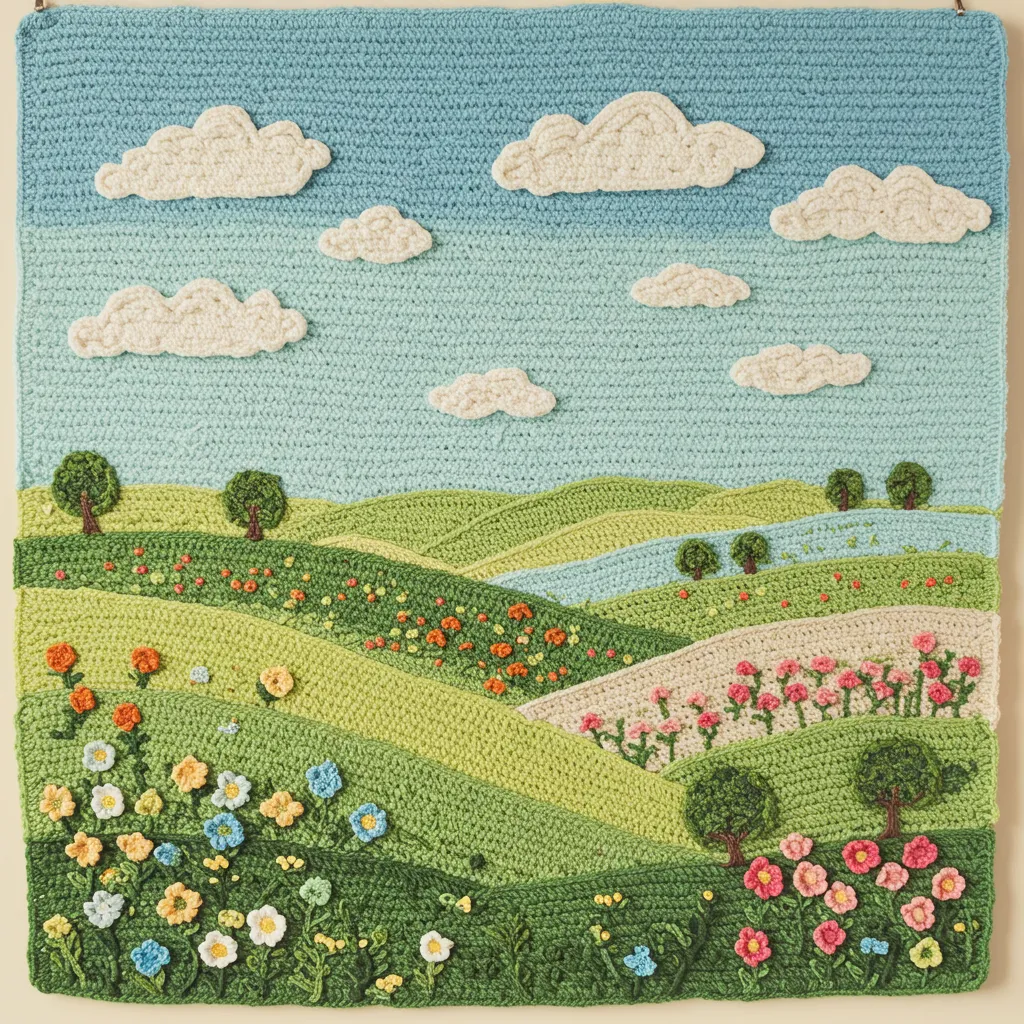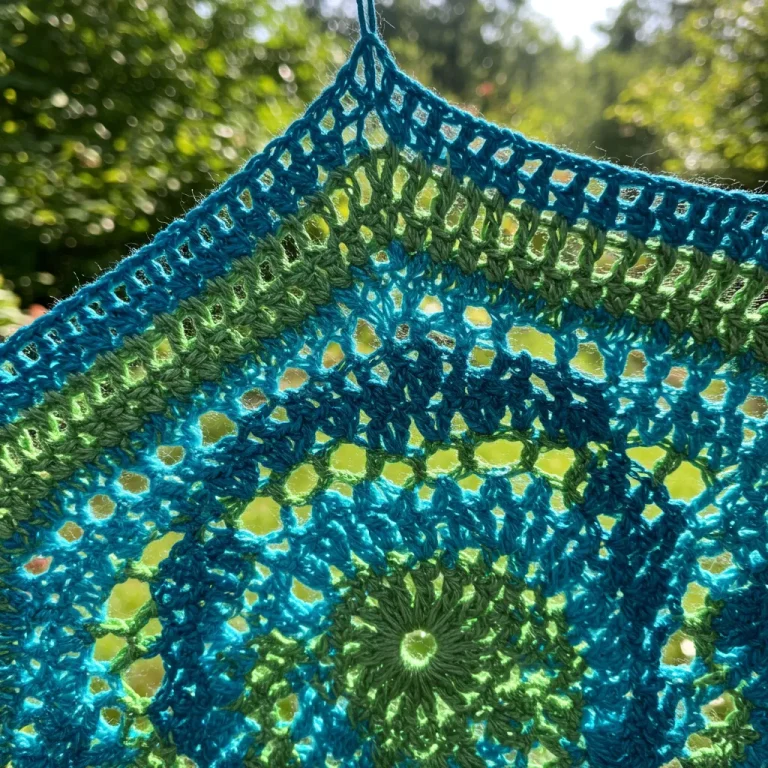The granny square is undoubtedly one of the most iconic motifs in the world of crochet, and its enduring popularity speaks to its versatility, simplicity, and timeless appeal. Whether you’re a seasoned crocheter or a beginner just picking up a hook, the granny square has likely crossed your path at some point. From cozy blankets to fashionable garments, these small, colorful squares have evolved from humble beginnings into a beloved staple in the craft world. But where did this crochet classic come from, and how has it endured through generations of crafters? Let’s explore the story behind the granny square.
The Humble Origins of the Granny Square
While the term “granny square” became widely popular in the 20th century, the origins of this motif are somewhat shrouded in mystery. It’s difficult to pinpoint exactly when or where the granny square first emerged, but it’s widely believed that the technique of joining small crochet squares together to form larger pieces dates back to the early 19th century. The motif itself likely evolved from traditional crocheted motifs and patterns that were common in Europe and North America.
The term “granny square” was likely coined in the early 1900s, as the craft of crochet became more mainstream, particularly in the United States. At this time, crochet was primarily practiced as a domestic craft, often passed down through generations of women in households. The use of colorful yarns, combined with simple, repetitive stitches like chain and double crochet, made the granny square an accessible and efficient way to create larger projects like blankets, afghans, and shawls.
One of the reasons the granny square gained so much popularity was due to its flexibility. Crafters could create a variety of designs simply by altering the number of rows or the colors of yarn used. It was a portable, customizable technique that could be easily picked up and worked on in bits and pieces, making it ideal for both casual crafters and those with more advanced skills.
The Granny Square and the Arts and Crafts Movement
The Granny Square gained wider recognition during the Arts and Crafts Movement of the late 19th and early 20th centuries. This movement, which emphasized the beauty and value of handcrafted goods, celebrated the aesthetic qualities of traditional crafts like crochet and knitting. As the movement grew in popularity, crochet patterns that used motifs like the granny square began to make their way into fashion and home décor.
This period saw the granny square transition from a purely functional craft technique to a form of artistic expression. Crafters began experimenting with different color combinations, textures, and even adding decorative elements like lace or beads to the square itself. The use of multiple colors within the square became a defining characteristic of the motif, as it allowed the creator to experiment with color theory and design principles.
In the early 20th century, the granny square appeared in household items like bedspreads, cushion covers, and tablecloths. The colorful squares helped brighten up homes, bringing a sense of warmth and charm to even the most mundane of spaces. This was especially significant during the Great Depression, when handmade items became more important as a way to save money while still creating functional, beautiful pieces.
The Granny Square in the 1960s and 1970s: A Crochet Revival
The granny square truly hit its stride during the 1960s and 1970s, when crochet experienced a resurgence in popularity, particularly in the United States and Europe. During this time, the granny square became emblematic of the counterculture movement, with its bold colors, free-spirited vibe, and DIY ethos. As young people turned away from traditional norms, the granny square emerged as a symbol of creative freedom and individuality.
The 1970s saw the granny square appear in everything from hippie-inspired garments to eclectic home décor. Granny square shawls, ponchos, and vests were common, and the motif even found its way into accessories like bags and scarves. The vibrant, patchwork nature of the squares allowed for endless customization, making them the perfect expression of the free-spirited, bohemian style of the time.
Moreover, this era marked the rise of the iconic “granny square blanket,” often made by crocheting small squares in different colors and joining them together to create large, cozy throws. These blankets became not only a popular household item but also a symbol of comfort, warmth, and handmade craftsmanship. It’s during this time that the granny square truly cemented its place as a crochet classic.
The Granny Square in Contemporary Crochet
Today, the granny square continues to be a staple in the crochet world, beloved by crafters of all ages and skill levels. The square has transcended its humble origins to become a versatile motif that appears in both traditional and contemporary designs. Modern crocheters have embraced the granny square for its timeless appeal, combining it with innovative techniques to create fresh and exciting new projects.
Modern Variations and Designs: While the classic granny square typically consists of a simple four-round pattern, contemporary crafters often add their own twist. Some use intricate color gradients, while others experiment with motifs like flowers, stars, or hearts within the squares. Tapestry crochet, mosaic crochet, and other advanced techniques have given the granny square new life, allowing for more complex and intricate designs that were once unimaginable.
The Granny Square in Fashion: In today’s fashion world, the granny square has made a comeback in both high-end and everyday fashion. Designers have used granny squares to create statement pieces like crop tops, dresses, and even full-on crochet ensembles. The trend has also found its place in accessories, such as bags, shoes, and hats, demonstrating the motif’s versatility in fashion.
Sustainability and Upcycling: In an age where sustainability is more important than ever, the granny square has become a symbol of eco-conscious crafting. Many crocheters now use leftover yarn scraps from previous projects to create colorful granny squares, making them an excellent way to upcycle and reduce waste. By combining creativity and sustainability, crafters are breathing new life into the classic motif, keeping it relevant in today’s world.
Why the Granny Square Endures
So, what is it about the granny square that has allowed it to endure through centuries of crafting trends? Part of its appeal lies in its simplicity: the granny square is a perfect entry point for beginners, yet offers endless possibilities for more experienced crocheters. The repetitive nature of the pattern makes it easy to memorize, and the small size of each square makes it a manageable project, whether you’re creating a large blanket or a small accessory.
Furthermore, the granny square’s adaptability is key to its longevity. From vintage designs to modern interpretations, the granny square can be customized in countless ways to suit any aesthetic. Whether you prefer the traditional look of a multi-colored patchwork blanket or a minimalist design, there’s a granny square pattern for every taste.
Finally, the granny square represents a sense of connection to the past. It’s a symbol of handmade craftsmanship, of creating something beautiful with your own two hands. In today’s fast-paced, mass-produced world, that connection to tradition and the joy of crafting something with care is something that resonates deeply with modern crafters.
Conclusion
From its modest beginnings to its role as a counterculture icon and its continued relevance in today’s crochet world, the granny square remains a timeless classic. Whether you’re creating a colorful blanket, designing a trendy crochet top, or simply enjoying the meditative process of stitching each square, the granny square stands as a testament to the enduring power of handmade art. So next time you pick up your hook, consider adding your own unique twist to this beloved motif—and carry on the tradition of the granny square for generations to come.




